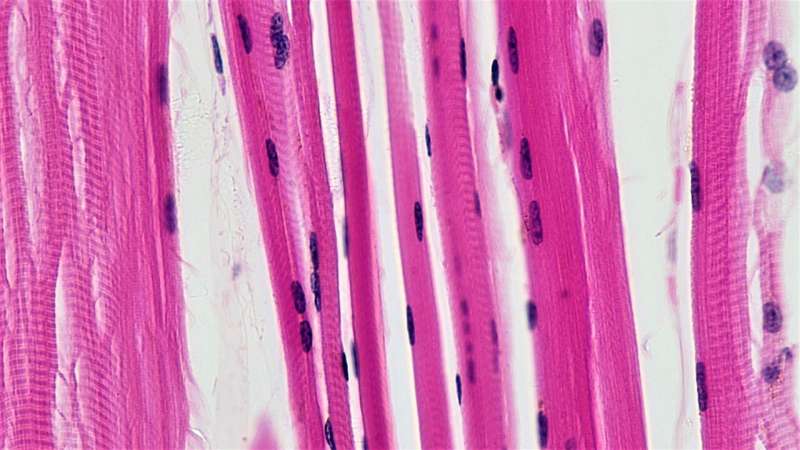January 19, 2023 report
This article has been reviewed according to Science X's editorial process and policies. Editors have highlighted the following attributes while ensuring the content's credibility:
fact-checked
peer-reviewed publication
trusted source
proofread
Evolutionary loss of a ryanodine receptor isoform appears to explain how resting muscles produce heat

A team of researchers from the University of Queensland, La Trobe University and Monash University, all in Australia, has found evidence that suggests the evolutionary loss of a ryanodine receptor isoform may explain how muscles in warm-blooded creatures evolved to allow for the generation of heat even when at rest. The paper is published in Proceedings of the National Academy of Sciences.
Cold-blooded creatures such as frogs are not able to maintain their body temperatures—instead, it is mainly influenced by environmental conditions. Warm-blooded creatures, on the other hand, are able to keep warm in cool environments via heat produced by their muscles, even when they are not active.
Prior research has suggested that warm-blooded creatures evolved from cold-blooded creatures; thus, some change had to have occurred that allowed for generating heat even when muscles are not in use. In this new effort, the researchers sought to find that change.
The researchers began by noting that muscles in cold-blooded and warm-blooded creatures are basically the same. So they reasoned that some small change must have occurred in the way heat is regulated in the muscle cells. That suggests it had to do with how calcium ions are regulated.
For creatures like mammals to produce more heat, their muscle cells must have evolved to hold on to high amounts of calcium in the fluid that surrounds them. Under this scenario, muscles would need to expend energy to remove the excess calcium, resulting in the release of heat.
To learn more about muscle fiber differences between mammals and cold-blooded creatures, the researchers collected samples of both and then watched as they responded to rising levels of calcium ions.
They found that in mammals, increases in calcium in resting muscle led to ion buildup in the sarcoplasmic reticulum. But in cold-blooded animals, the increase was automatically reduced via slightly different types of RyR channels—heat did not build up because the ion calcium pumps did not need to work as hard. The researchers suggest this indicates that the loss of one type of RyR is what led to warm-blooded creatures evolving to become less sensitive to calcium ion buildup.
More information: Daniel P. Singh et al, Evolutionary isolation of ryanodine receptor isoform 1 for muscle-based thermogenesis in mammals, Proceedings of the National Academy of Sciences (2023). DOI: 10.1073/pnas.2117503120
Journal information: Proceedings of the National Academy of Sciences
© 2023 Science X Network


















